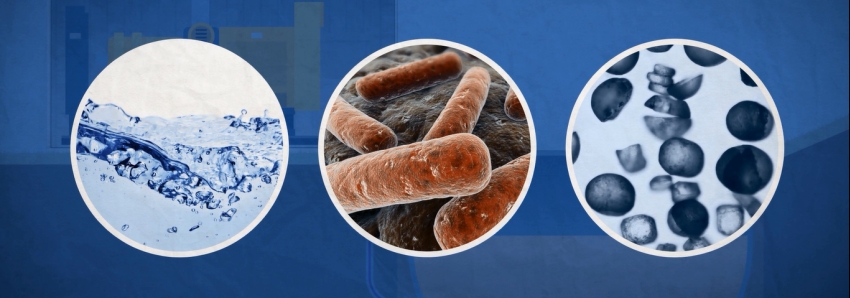Microbial growth – the diesel bug
What is diesel bug?
Diesel bug is a generic name for the microbial contamination that grows in diesel fuel. It has become an especially troublesome form of fuel contamination since we started using biodiesel.
Pages 12-15 of our Fuel Conditioning Handbook give a useful insight into why microbial contamination is increasingly becoming a threat to the quality of our stored fuel, and how to distinguish between the different categories of diesel bug. Click here to request your free copy
Diesel fuel now contains up to 7% biodiesel; this is great for the environment but not always good for organisations having to store fuel.
Biodiesel is hygroscopic; it holds and attracts water far more than petrochemical diesel. Attracting water is bad news for diesel fuel. It encourages the growth of diesel bug and leads to the formation of gums and resins which can stick to the side of fuel tanks and injectors. It can even cause layers of sediment to build up inside the tank.
This puts your critical power at risk.
Video: Understanding fuel contamination
Why are we only hearing about diesel bug now?
When we used petrochemical diesel we had few problems with the diesel bug. It thrives where it finds both water and diesel; petrochemical diesel does not attract water the way biodiesel does.
What are the different types of diesel bug?
The diesel bug is not a single type of organism. There are thousands of different types of bacteria, mould and yeast found inhabiting fuel systems. This kind of contamination is hard to predict as every system offers a unique environment.
There are broadly four categories of diesel bug:
- Bacteria: single cell organisms, typically 0.3 to 60µm in size. A colony can double in size in 20-30 minutes. One cell can multiply into 2 million in 7 hours. Bacteria will degrade quality fuel over time.
- Mould: a type of fungi with long multi-cellular filaments. There is little indication that mould degrades fuel but, due to the long strands, it does block filters.
- Yeast: another type of relatively slow-growing fungi. It is typically 3-4µm in size.
- Biofilm: a complex structure of microbes which adhere to the walls of the fuel tank and to each other. It begins to form when free floating microbes land on a surface and attach themselves to it. Given time, biofilms can grow many millimetres thick and produce a protective slime. Biofilms can excrete acid which can erode a metal fuel tank. Chunks of biofilm can slough off periodically, giving microbes the opportunity to infect other areas of the fuel system and block filters.

Diesel suffers from three main types of contamination: water contamination (left), microbial growth (a.k.a. the ‘diesel bug’) (centre), solid particulate contamination (right)
Do you find algae in biodiesel?
Algae are a form of plant life that require light to grow. Although you find many types of microbial growth in biodiesel, it is very unusual to find algae inside a lightless tank.
How can you stop diesel bug growing?
Prevention is always best. The key to maintaining fuel quality is good housekeeping. IPU Group recommends following a comprehensive fuel conditioning programme to ensure that your diesel-powered equipment runs reliably and economically. Effective programmes include four stages: testing, cleaning, polishing and stabilisation.

IPU’s Fuel Conditioning Programme contains 4 stages: Testing, Cleaning, Polishing and Stabilisation.
What can be done for tanks already infected with diesel bug?
We offer ClearTank, a comprehensive tank cleaning service that removes contamination that has grown beyond the level which polishing can clear.
ClearTank addresses water, microbial and solid particulate contamination.
